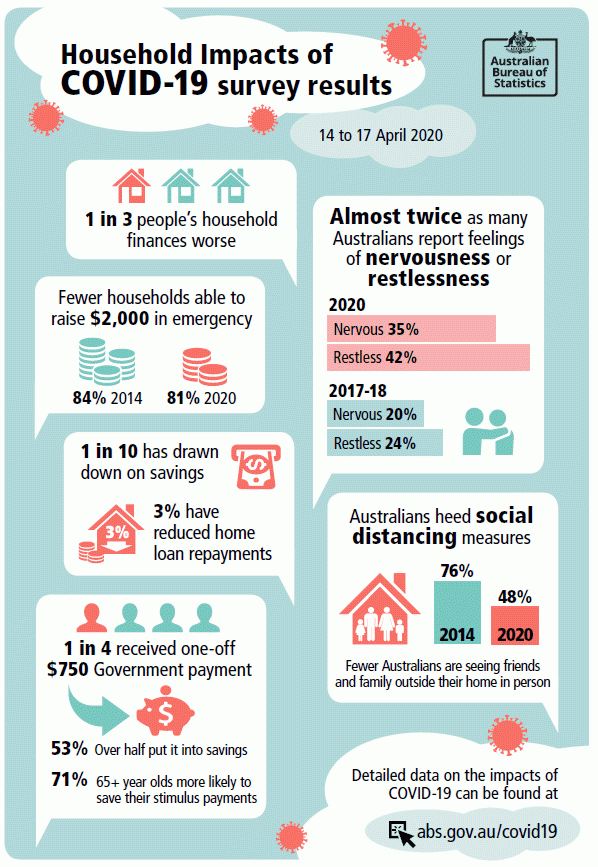This publication presents results from the second Household Impacts of COVID-19 Survey, which collected information from 1,028 people, via telephone, throughout Australia between the 14th and 17th of April 2020.
Results from the first Household Impacts of COVID-19 Survey, released on the 20th of April, are available on the ABS website here.
This second iteration of the survey collected information on:
- financial stress;
- stimulus payments received and how used;
- changes to job situation;
- feelings of emotional and mental wellbeing; and
- contact with family and friends.
The scope of the survey was persons aged 18 years and over in private dwellings across Australia (excluding very remote areas).
This collection series is designed to provide a quick snapshot about how Australian households are faring in response to the changing social and economic environment caused by the COVID-19 pandemic.
At the time of the survey, a range of initiatives were announced to help reduce the spread of COVID-19 and support the economy. These included:
- introduction of international travel restrictions;
- the first announcement of an economic stimulus package (12 March);
- introduction of border control measures for some states and territories;
- shutting down of non-essential services and the announcement of a second economic stimulus package (22 March);
- a safety net package of $1.1 billion to expand mental health and tele-health services, increase domestic violence services and provide more emergency food relief (29 March);
- social distancing rules and additional shutdown restrictions (20 - 30 March);
- JobKeeper payment announcement (30 March);
- free childcare for working parents (2 April); and
- some states and territories announced learning from home arrangements for most school students for term two.
Proportions marked with an asterisk (*) have a margin of error >10 percentage points which should be considered when using this information. For more information about margin of error refer to the publication Methodology.
